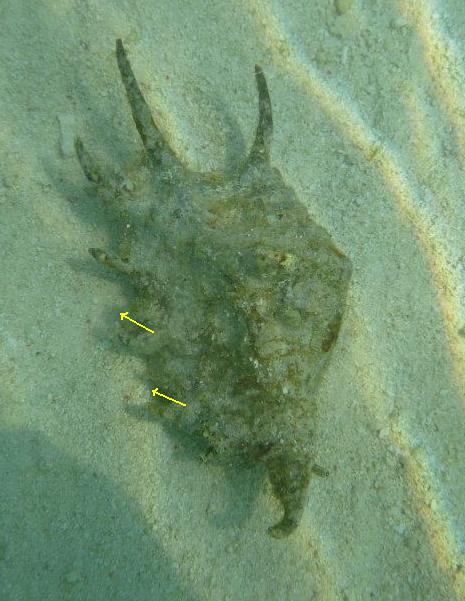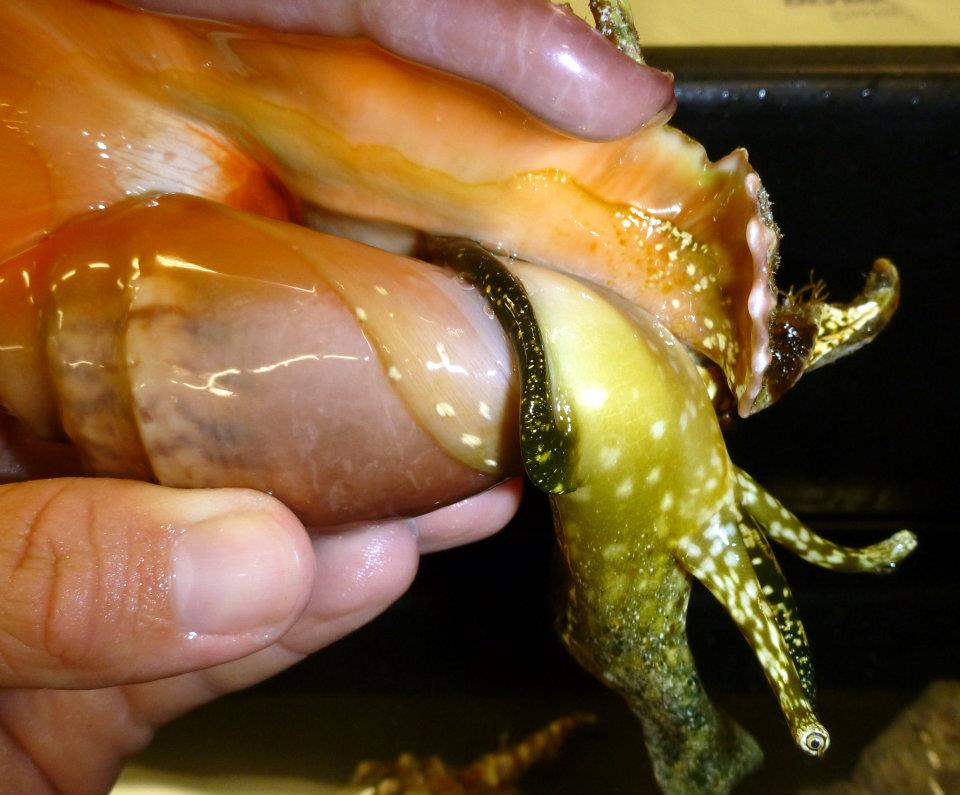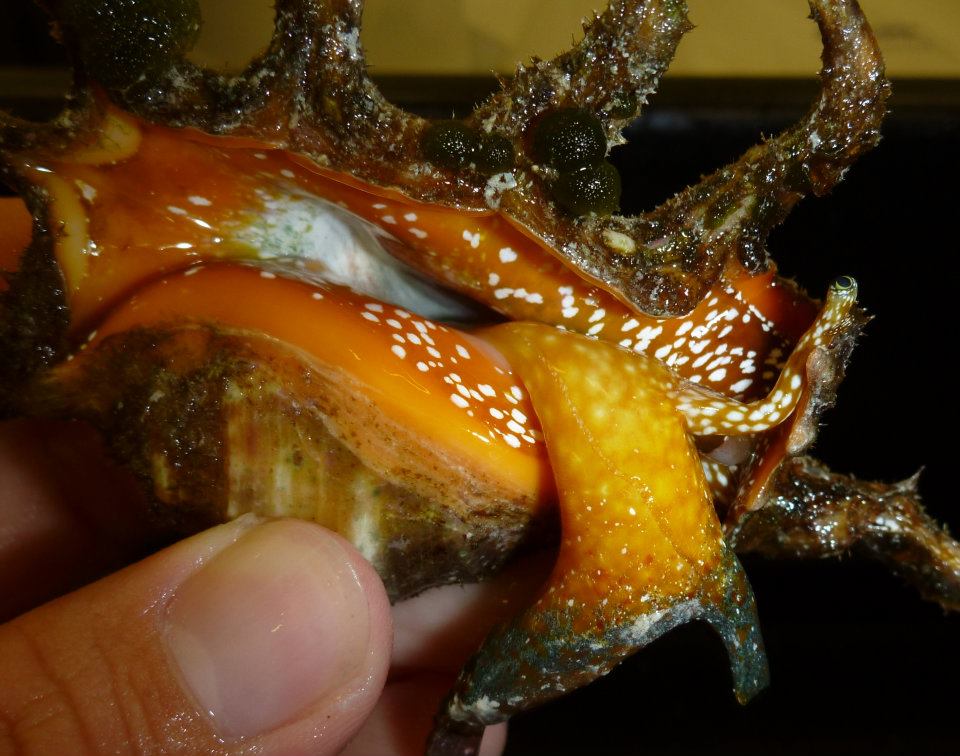Sexual dimorphism
Spider conchs are very sexually dimporphic (Walls 1980). There are a number of characteristics used to distinguish males from females, the most obvious being size; males tend to grow much larger and more robust than females.
The six hollow marginal digitations of the flared outer lip are also used to distinguish genders of this species, as subtle differences occur in their size and shape. In males, the two anteriormost digitations are short and protrude posteriorly from the shell (See Figure 1). Whereas in females, the two anteriormost digitations are long and protrude anteriorly from the shell (See Figure 2).

Figure 1: Dorsal view of male spider conch with
anterior end to the bottom. |

Figure 2: Dorsal view of female spider conch with
anterior end to the bottom.
|
Apart from shell characteristics, males can be distinguished from females by the presences of a relatively large penis, or verge, on the right dorsal part of the visceral mass. This can be observed when males extend their visceral mass from their shells (See Figure 3).
 Figure 3: Male spider conch extended from shell. Note the relatively large penis. Figure 3: Male spider conch extended from shell. Note the relatively large penis. |

Figure 4: Female spider conch extended from shell. No penis present. |
|